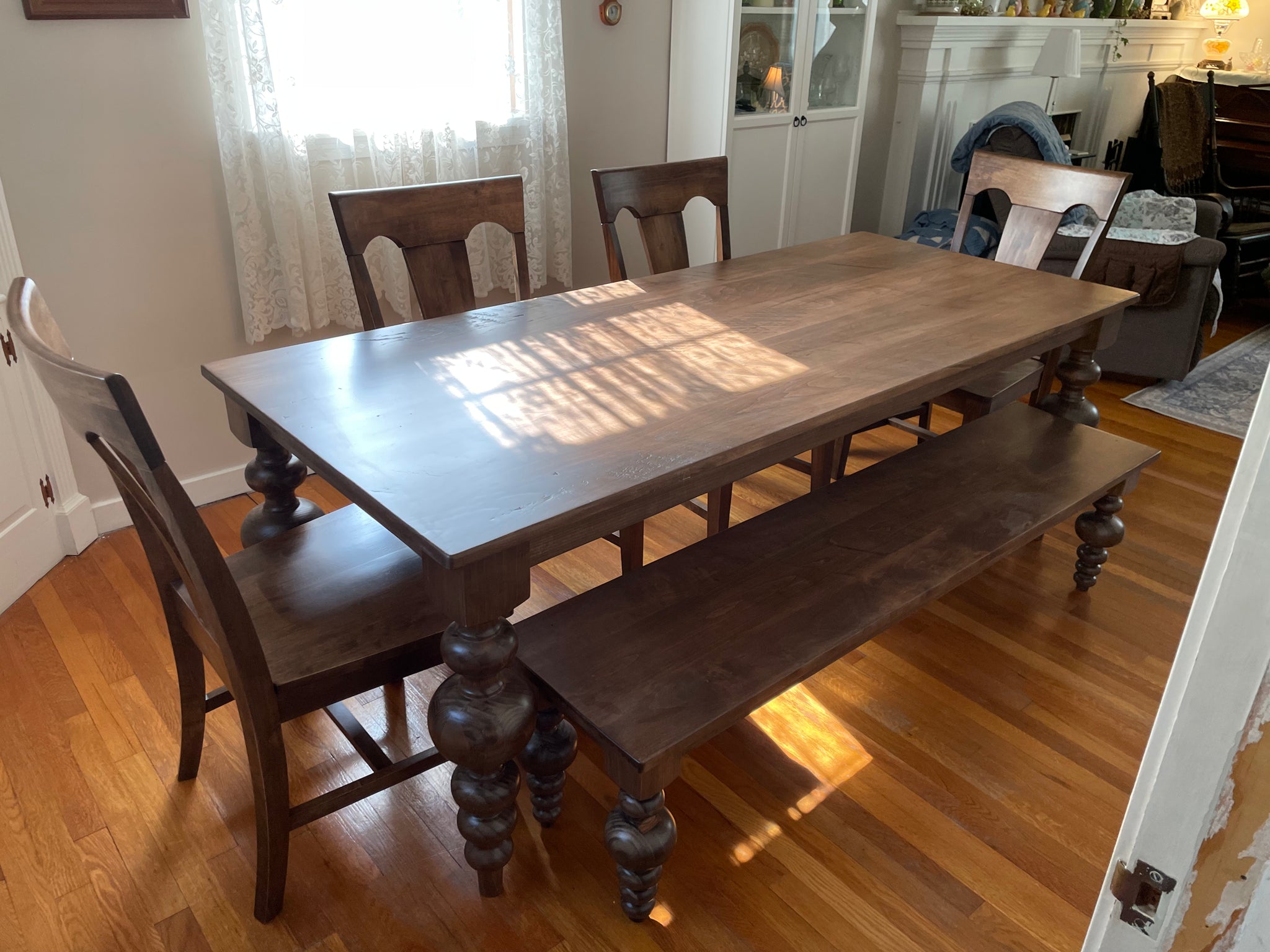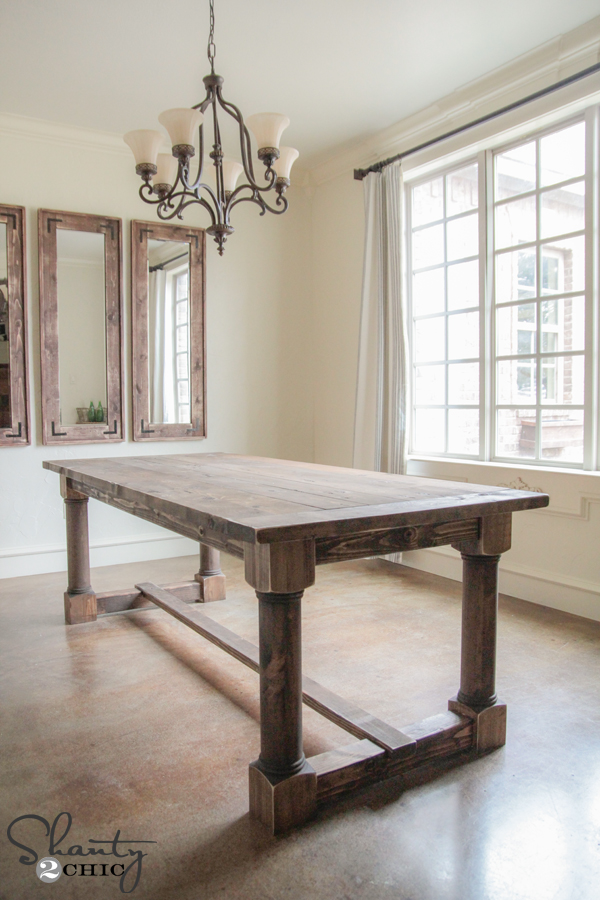Find the Ideal Dining Room Table Legs for Any Interior Design Style
Find the Ideal Dining Room Table Legs for Any Interior Design Style
Blog Article
From Standard to Modern: Find the Perfect Dining Area Table Legs for Your Style
While timeless layouts such as cabriole and turned legs stimulate a feeling of timeless elegance, modern designs like barrette and geometric options provide a possibility for striking aesthetic interest. As you think about these components, the inquiry remains: exactly how can you effortlessly incorporate these varied leg styles to create a harmonious dining experience?
Recognizing Table Leg Styles
The selection of dining-room table leg designs can dramatically affect both the aesthetics and functionality of the space. Each leg style adds one-of-a-kind aesthetic components and sensible attributes, catering to diverse design preferences and usage demands. Comprehending these styles is essential for selecting the right table that straightens with your total interior design vision.
As an example, conical legs use a clean, classic appearance that can improve a space's elegance, while stand bases supply stability and optimize legroom, making them suitable for smaller spaces. Barrette legs, a trademark of mid-century modern layout, introduce an industrial panache, enabling an airy, open feeling. Likewise, trestle legs evoke rustic beauty, offering durable support and a feeling of timelessness.
In addition, the option of products plays a considerable role. Wood legs can bring heat and structure, whereas steel choices often communicate a sleek, modern ambiance. Eventually, recognizing table leg styles is essential for producing a natural dining location that reflects personal design while ensuring functionality and convenience. By thoughtfully taking into consideration these elements, you can improve both the visual and useful appeal of your eating room.
Traditional Table Leg Options
When selecting eating area table legs, typical options typically personify classic elegance and craftsmanship. These designs show a rich heritage and a commitment to high quality, making them excellent for those that value traditional appearances.
Among one of the most iconic conventional leg styles is the cabriole leg, defined by its stylish rounded shape. This design typically features ornamental carvings and is most typically discovered in Queen Anne and Chippendale furniture. One more prominent choice is the turned leg, which boasts a series of smooth, rounded forms that give a timeless appearance while keeping security.
Moreover, the straight leg, while basic, provides a unadorned and sturdy framework that can mix effortlessly with a range of tabletop styles. For those attracted to ornate describing, claw-and-ball feet legs evoke a sense of grandeur and can function as a magnificent prime focus in any type of eating space.
Lastly, pedestal bases, although not strictly legs, give a different standard choice that allows for ample legroom and can be perfectly sculpted. Each of these traditional leg designs adds to the overall setting of a dining-room, weding function with visual charm.

Modern Table Leg Designs
Modern table leg layouts provide a varied variety of designs that highlight ingenious products and clean lines. These layouts typically focus on performance while offering as striking centerpieces within an eating area. Minimal aesthetic appeals prevail, with legs crafted from materials such as steel, glass, and engineered useful link wood, which add to a airy and modern feel.
One preferred design is the barrette leg, identified by its slender, tapered framework that provides stability without frustrating the table top (dining room table legs). This style is commonly located in mid-century modern furniture and can easily enhance various table forms. An additional trend is making use of geometric forms, where legs might take on angular or asymmetrical kinds, including aesthetic interest and a touch of creativity

Blending Styles for Unique Spaces
Often, homeowners look for to develop special dining spaces that mirror their individual style by mixing different design elements. This strategy enables the consolidation of diverse aesthetic appeals, resulting in a harmonious yet distinct atmosphere. As an example, pairing a rustic wood table with smooth, modern steel legs can produce an appealing contrast that boosts the space's total charm.
Additionally, incorporating vintage table legs with contemporary table tops can evoke a feeling of click here for more history while i was reading this preserving a modern perceptiveness. Such combinations not just showcase private preference however additionally encourage creative thinking, enabling home owners to curate an area that really feels both personal and welcoming.
Color plays a crucial function in this mixing process; picking table legs that complement or comparison with the existing color pattern can boost visual rate of interest. Whitewashed legs can soften the daring of a dark table surface, producing a well balanced aesthetic.
Tips for Selecting the Right Legs
Picking the right table legs is important for accomplishing both capability and aesthetic charm in your eating room. Begin by considering the general design of your area. Traditional settings profit from legs that include detailed carvings or turned styles, while contemporary areas might ask for sleek, minimal designs.
Following, analyze the elevation and stability of the legs. dining room table legs. Basic eating tables vary in between 28 to 30 inches in elevation, so make certain the legs complement this measurement for comfort. Additionally, robust materials, such as hardwood or metal, can enhance stability and durability
Assess the leg shape also-- choices consist of directly, tapered, or stand styles. Straight legs use a traditional appearance, while conical legs can include a touch of sophistication. Pedestal bases supply enough legroom and are excellent for smaller sized rooms.
Verdict
In recap, choosing the perfect eating space table legs requires mindful factor to consider of both conventional and modern designs. By balancing leg style, elevation, and material with the total decoration, a natural and welcoming atmosphere can be accomplished.
The variety of eating room table leg styles can substantially influence both the visual appeals and capability of the area. Inevitably, comprehending table leg designs is necessary for creating a natural eating area that mirrors personal style while ensuring functionality and convenience.One of the most renowned typical leg styles is the cabriole leg, defined by its elegant rounded form. Straight legs offer a traditional appearance, while tapered legs can add a touch of style.In summary, picking the perfect dining area table legs requires cautious factor to consider of both conventional and contemporary styles.
Report this page